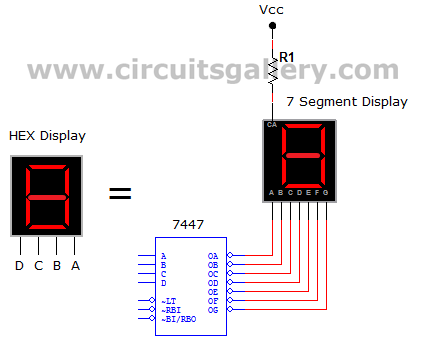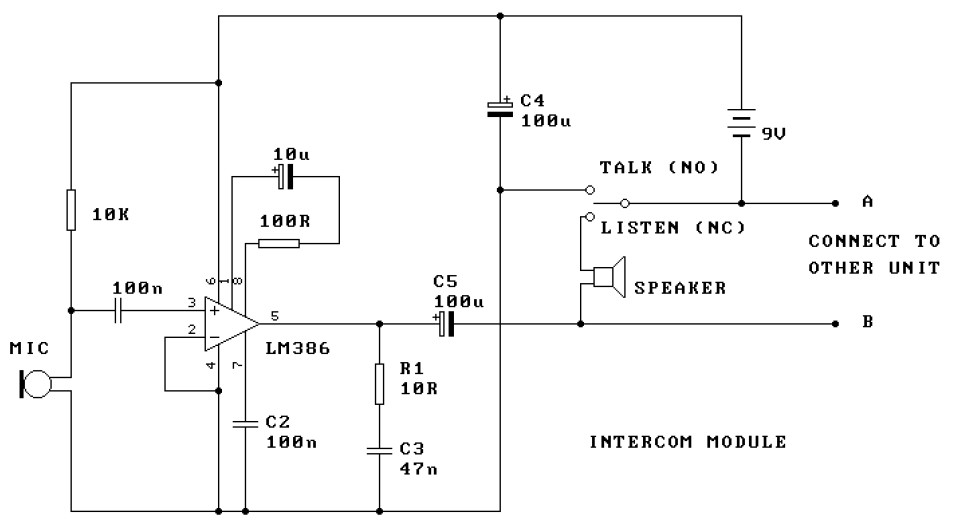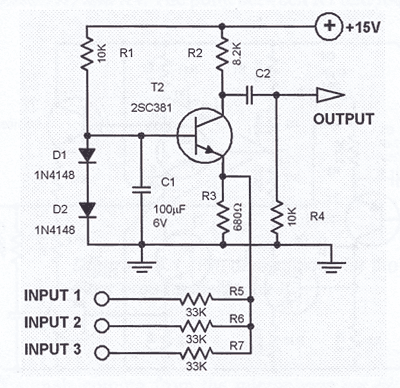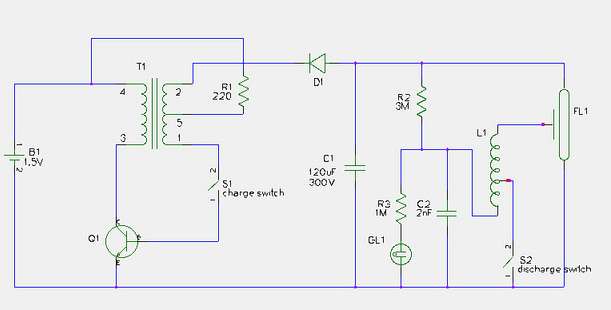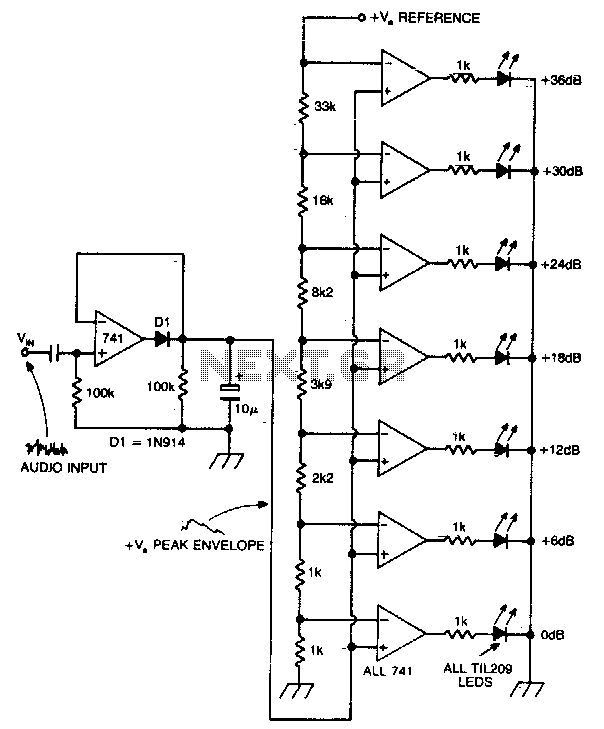
White Led driver circuit diagram using LM3404
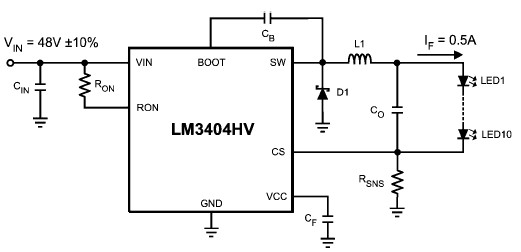
The LM3404 is a monolithic switching regulator that can be utilized to design a simple constant current driver for high-power LEDs. This LED driver project is suitable for automotive, industrial, and general lighting applications. Hysteretic control of the on-time, along with an external resistor, allows for the adjustment of the converter output voltage to deliver a constant current to series and series-parallel connected LED arrays of varying numbers and types. The LED driver circuit requires a regulated DC voltage input of 48V ±10%. This constant current LED driver can power ten series-connected LEDs at 500 mA ±10% with a ripple current of 50 mA P-P or less. The typical forward voltage of the LED module in thermal steady state is 35V, resulting in an average output voltage of 35.2V. The design of this constant current LED driver circuit requires only a few external electronic components, and its compact design makes it suitable for applications where space is limited. The bootstrap capacitor, CB, should always be a 10 nF ceramic capacitor with X7R dielectric, and a 25V rating is appropriate for all application circuits. It is important to note that electrical efficiency should not be confused with the optical efficacy of the circuit, which depends on the LEDs themselves. The total output power, PO, is calculated as: PO = IF x VO = 0.5 x 35.2 = 17.6W.
The LM3404 constant current LED driver circuit is designed to efficiently regulate the output current for high-power LEDs, making it ideal for various lighting applications. The circuit operates by utilizing hysteretic control, which provides a simple yet effective means of maintaining the desired output current. The external resistor plays a critical role in setting the output current level, allowing for flexibility in adapting to different LED configurations.
The input requirement of 48V ±10% ensures that the circuit can operate effectively within a standard range, making it suitable for integration into existing systems. The capability to power ten series-connected LEDs at a current of 500 mA ±10% with minimal ripple current enhances the performance and reliability of the lighting solution. The specified forward voltage of the LEDs at thermal steady state ensures that the driver can deliver the necessary power without exceeding thermal limits.
The compact nature of the design, requiring only a few external components, facilitates easy integration into tight spaces, which is often a constraint in modern lighting designs. The use of a 10 nF ceramic capacitor with X7R dielectric as the bootstrap capacitor ensures stable operation across varying temperatures and conditions, while the 25V rating provides adequate headroom for reliable performance.
In summary, the LM3404-based LED driver circuit offers a reliable and efficient solution for high-power LED applications, with a focus on simplicity, flexibility, and compact design. The calculated total output power of 17.6W confirms the circuit's capability to meet demanding lighting requirements, making it an excellent choice for automotive, industrial, and general lighting applications.Using the LM3404 are monolithic switching regulator can be designed a very simple constant current driver for high power LEDs. This LED driver electronic project is ideal for automotive, industrial, and general lighting applications.
Hysteretic controlled on-time and an external resistor allow the converter output voltage to adjust as needed to d eliver a constant current to series and series-parallel connected LED arrays of varying number and type. The LED driver circuit require a regulated DC voltage input of 48V ±10%. Using this constant current LED driver will power ten series-connected LEDs at 500 mA ±10% with a ripple current of 50 mAP-P or less.
The typical forward voltage of the LED module in thermal steady state is 35V, hence the average output voltage will be 35. 2V. As you can see this constant current LED driver circuit design, require few external electronic components and due to a compact design it can be used in some light applications where space is critical.
The bootstrap capacitor CB should always be a 10 nF ceramic capacitor with X7R dielectric. A 25V rating is appropriate for all application circuits. Electrical efficiency, ·, should not be confused with the optical efficacy of the circuit, which depends upon the LEDs themselves. Total output power, PO, is calculated as: PO = IF x VO = 0. 5 x 35. 2 = 17. 6W. 🔗 External reference
The LM3404 constant current LED driver circuit is designed to efficiently regulate the output current for high-power LEDs, making it ideal for various lighting applications. The circuit operates by utilizing hysteretic control, which provides a simple yet effective means of maintaining the desired output current. The external resistor plays a critical role in setting the output current level, allowing for flexibility in adapting to different LED configurations.
The input requirement of 48V ±10% ensures that the circuit can operate effectively within a standard range, making it suitable for integration into existing systems. The capability to power ten series-connected LEDs at a current of 500 mA ±10% with minimal ripple current enhances the performance and reliability of the lighting solution. The specified forward voltage of the LEDs at thermal steady state ensures that the driver can deliver the necessary power without exceeding thermal limits.
The compact nature of the design, requiring only a few external components, facilitates easy integration into tight spaces, which is often a constraint in modern lighting designs. The use of a 10 nF ceramic capacitor with X7R dielectric as the bootstrap capacitor ensures stable operation across varying temperatures and conditions, while the 25V rating provides adequate headroom for reliable performance.
In summary, the LM3404-based LED driver circuit offers a reliable and efficient solution for high-power LED applications, with a focus on simplicity, flexibility, and compact design. The calculated total output power of 17.6W confirms the circuit's capability to meet demanding lighting requirements, making it an excellent choice for automotive, industrial, and general lighting applications.Using the LM3404 are monolithic switching regulator can be designed a very simple constant current driver for high power LEDs. This LED driver electronic project is ideal for automotive, industrial, and general lighting applications.
Hysteretic controlled on-time and an external resistor allow the converter output voltage to adjust as needed to d eliver a constant current to series and series-parallel connected LED arrays of varying number and type. The LED driver circuit require a regulated DC voltage input of 48V ±10%. Using this constant current LED driver will power ten series-connected LEDs at 500 mA ±10% with a ripple current of 50 mAP-P or less.
The typical forward voltage of the LED module in thermal steady state is 35V, hence the average output voltage will be 35. 2V. As you can see this constant current LED driver circuit design, require few external electronic components and due to a compact design it can be used in some light applications where space is critical.
The bootstrap capacitor CB should always be a 10 nF ceramic capacitor with X7R dielectric. A 25V rating is appropriate for all application circuits. Electrical efficiency, ·, should not be confused with the optical efficacy of the circuit, which depends upon the LEDs themselves. Total output power, PO, is calculated as: PO = IF x VO = 0. 5 x 35. 2 = 17. 6W. 🔗 External reference
